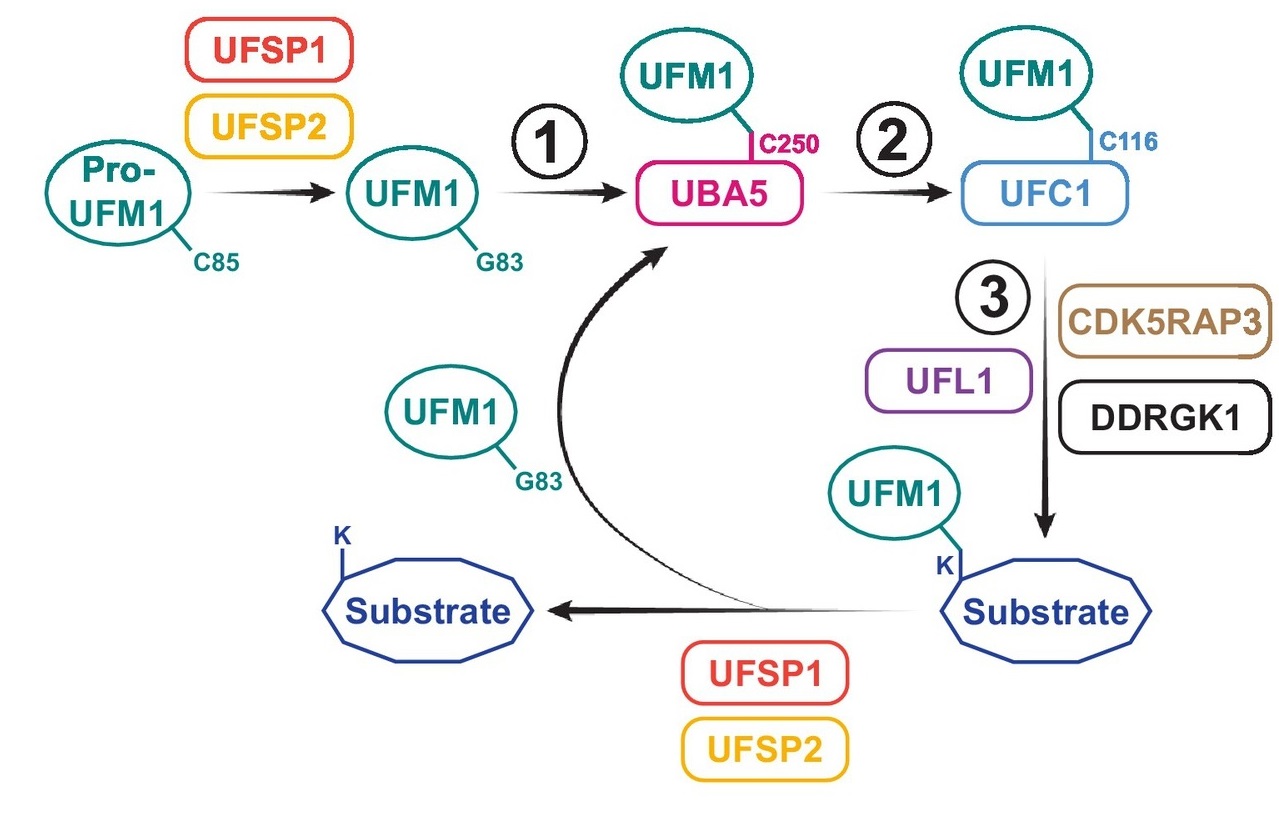UFMylation Proteomics Analysis Service
UFMylation proteomics analysis is a proteomics research service focused on the novel post-translational modification known as UFMylation. UFMylation refers to the covalent attachment of the ubiquitin-fold modifier 1 (UFM1) to target proteins via an enzymatic cascade, thereby regulating the biological properties of proteins such as stability, activity, and subcellular localization. This service combines specific enrichment strategies with high-resolution mass spectrometry (LC-MS/MS) to achieve highly sensitive identification and quantitative analysis of UFMylated proteins and their modification sites.
UFMylation proteomics analysis service is widely applied across multiple research fields and is particularly suitable for investigating the regulatory role of UFMylation in processes such as cellular stress responses, endoplasmic reticulum homeostasis, and protein quality control. In cutting-edge areas like oncology, neuroscience, and immunology, UFMylation has been implicated in cancer development, neurodegeneration, and immune regulation. Through this service, researchers can uncover UFMylation-mediated signaling pathways and functional networks, providing critical support for disease mechanism studies and the discovery of potential drug targets.

Zhou, X C. et al. Trends in Biochenmical Sciences, 2024.
Figure 1. Overview of the UFMylation and deUFMylation Processes.
Services at MtoZ Biolabs
MtoZ Biolabs, leveraging a high-resolution mass spectrometry platform, offers UFMylation proteomics analysis service focused on the identification and quantitative analysis of protein UFMylation modifications. This service integrates specific enrichment strategies with LC-MS/MS technology to detect UFM1-modified peptides and their exact modification sites. The deliverables include a list of modified proteins, site-specific modification information, abundance changes, and functional annotations, supporting in-depth investigation of UFMylation’s role in cellular regulation and disease mechanisms.
Analysis Workflow
1. Protein Extraction and Digestion
Total proteins are extracted from cells, tissues, or body fluid samples and digested with trypsin to generate peptides for detection.
2. Enrichment of UFMylated Peptides
UFMylated peptides are enriched using UFM1-specific antibodies or tag-affinity techniques to enhance the sensitivity of modification detection.
3. Mass Spectrometry Detection and Data Acquisition
Enriched peptides are accurately detected using high-resolution LC-MS/MS platforms, and mass spectrometry data are acquired.
4. Data Analysis and Functional Annotation
UFMylation modification sites are identified through database searching and bioinformatics tools, followed by functional annotation, pathway enrichment, and protein interaction network analysis.
Sample Submission Suggestions
1. Sample Type
It is recommended to provide samples rich in target proteins, such as cells, tissues, or serum. Lyophilized powder, lysates, or total protein samples are acceptable.
2. Sample Transportation
Samples should be sealed to prevent leakage and contamination. Standard protein samples can be transported using cold packs, while temperature-sensitive or long-distance shipments should use dry ice. Please contact MtoZ Biolabs in advance to confirm shipping details and receiving time to ensure sample stability and data quality.
Service Advantages
1. High-Resolution Mass Spectrometry Platform
Utilizing Orbitrap-based high-resolution LC-MS/MS systems to achieve highly sensitive detection and accurate quantification of low-abundance UFMylated peptides.
2. Specific Enrichment Strategy
Combining efficient enrichment methods targeting UFM1-modified peptides to enhance detection coverage and data quality of target modifications.
3. Comprehensive Data Interpretation
Providing multi-level data support, including UFMylation site identification, differential analysis, GO/KEGG pathway annotation, and protein–protein interaction network construction.
4. Customized Analysis Workflow
Offering tailored analysis workflows and parameter configurations based on clients’ research needs, balancing analytical depth and sample throughput, suitable for both basic and translational research settings.
Applications
1. Protein Functional Regulation Studies
Systematic analysis of UFMylation modification sites reveals its biological roles in regulating protein stability, localization, and interactions.
2. Disease Mechanism Exploration
UFMylation proteomics analysis service is widely applied in studies of cancer, neurodegenerative diseases, and immune disorders to elucidate the regulatory mechanisms of UFMylation under pathological conditions.
3. Stress and Homeostasis Response Research
UFMylation plays a critical role in physiological processes such as endoplasmic reticulum stress and cell cycle regulation, making it a valuable tool for studying cellular adaptive response mechanisms.
4. Identification of Potential Drug Targets
Through comprehensive profiling of UFMylation modifications, this service enables the identification of key regulatory proteins and modification sites, providing target clues for novel drug development.
FAQ
Q1: Can Unknown UFM1 Modification Sites Be Detected?
A1: Yes. Through database searches and data mining algorithms, we can identify and annotate both known and potential UFMylation sites, uncovering novel modification substrates and regulatory mechanisms.
Q2: Is Bioinformatics Analysis Included?
A2: Yes. The service includes multidimensional bioinformatics analyses such as GO/KEGG pathway enrichment, protein–protein interaction (PPI) network analysis, functional annotation, and substrate prediction, helping to fully elucidate the biological significance of UFMylation.
How to order?







